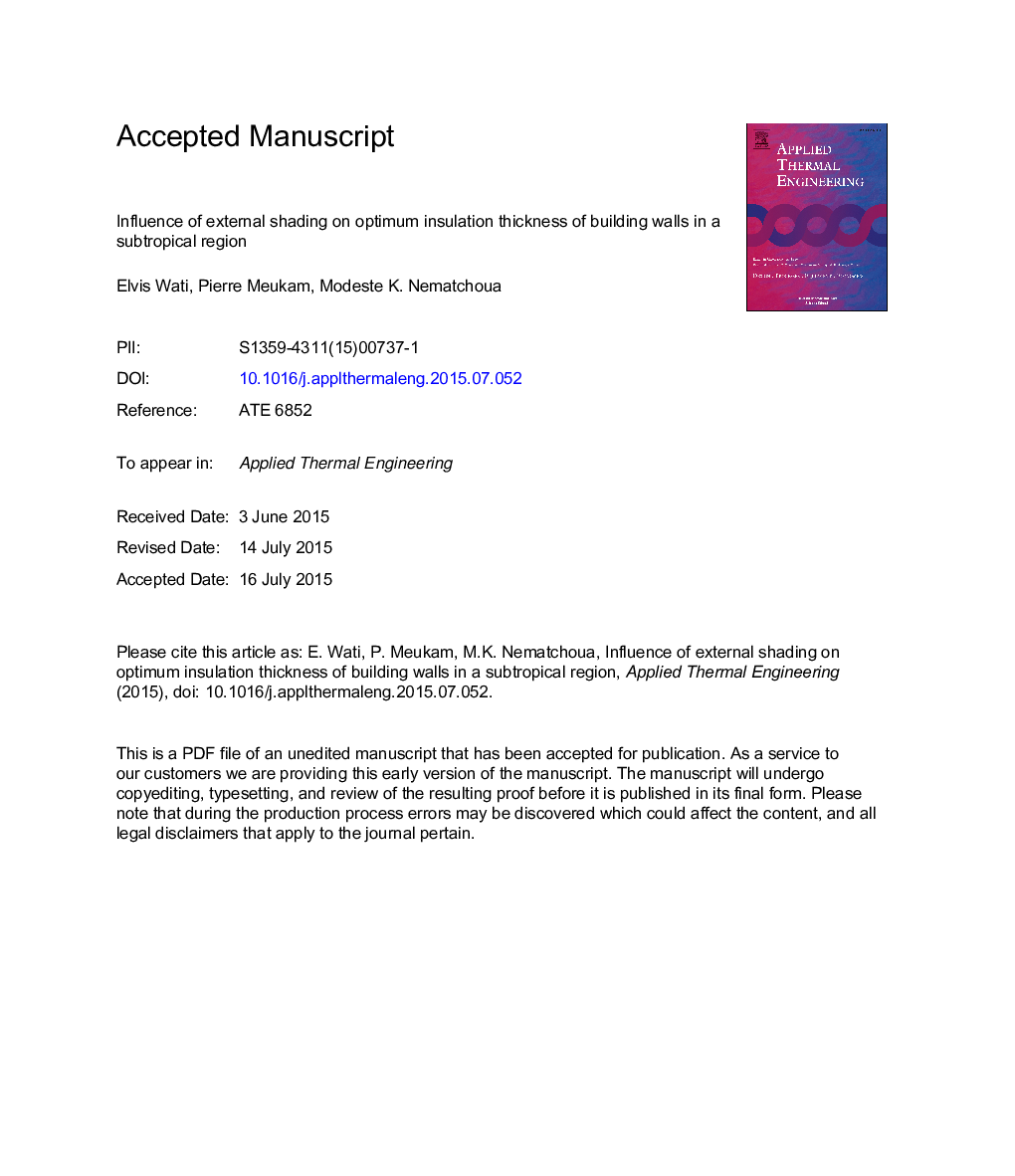| Article ID | Journal | Published Year | Pages | File Type |
|---|---|---|---|---|
| 7048885 | Applied Thermal Engineering | 2015 | 22 Pages |
Abstract
This study aims to optimize the thicknesses of insulation layers in external walls of continuously used building in a tropical region according to shade level. The investigation is carried out under steady periodic conditions for various wall orientations using a Simulink model constructed from H-Tools (the library of Simulink models). Walls are assumed to be insulated using expanded polystyrene material. The shade level of the building site is assumed to be varying from 0 to 97% with an increment of 25% or 22%. Yearly cooling load is calculated and used as input to an economic model for the determination of the optimum insulation thickness. It is seen that as shade level increases, optimum insulation thickness decreases at an average rate of 0.035Â cm, 0.029Â cm and 0.036Â cm per percentage of solar radiation blocked for south, north and east/west oriented wall, respectively. Results also show that energy savings vary between 46.89Â $Â mâ2 and 101.29Â $Â mâ2 and payback periods vary between 3.56 years and 4.97 years depending on shade level and wall orientation.
Related Topics
Physical Sciences and Engineering
Chemical Engineering
Fluid Flow and Transfer Processes
Authors
Elvis Wati, Pierre Meukam, Modeste K. Nematchoua,
